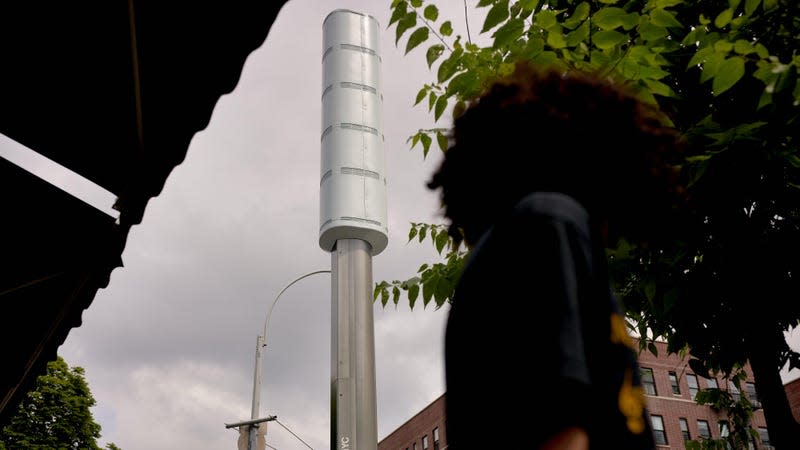Lots of Tiny 5G Towers Could Increase Your Battery Life by 50%

Researchers out of the University of California San Diego say that building more, smaller 5G towers could increase everyone in an urban area’s battery life by roughly 50%. Rethinking how urban areas approach 5G coverage would improve the area’s carbon footprint and overall coverage, according to a new study first reported by New Scientist Wednesday.
“We show that such a densification strategy conquers two key problems,” said UC San Diego researchers in the study. “It can potentially save about 3x power savings by avoiding large wireless signal losses due to high range, and also lead to 50% improved battery life for the connected smartphones on the dense network as a consequence of being located closer and at a smaller height to them.”
The paper, titled “Densify & Conquer,” suggests urban areas should transition from using large-power base stations to small-cell networks. Instead of using one big 5G tower, with a huge signal radius, to provide coverage for an entire region, the UC San Diego researchers suggest using a system of smaller towers. Each little tower will have a weaker signal and consume less energy than a big one, but the network will ultimately offer greater net coverage for the area.
The reason this translates to 50% better battery life for each person is that everyone’s signal would be stronger in a small cell network, according to the researchers. When you have a weak signal, your phone is required to transmit large data packets to successfully reach the farther away cell tower. While this worse battery life is annoying on a personal level, at scale, this increases the carbon footprint of a region because everyone is charging their phone more often.
This kind of small-cell network could not have worked in the 4G era, Gupta told New Scientist. 5G networks are capable of switching from tower to tower relatively seamlessly, making this denser network possible, whereas older networks had noticeable lags that made large-power base stations more practical.
Researchers used open-source software to model transmissions between base stations and mobile phones in 3D models of real cities. Their simulations found there need to be five times more cell towers to achieve their proposed benefits. However, each tower only needs to be 15 meters tall, meaning they could be mounted atop street lights or buildings. The study offers a practical, cost-effective solution for network providers while improving coverage for urban areas.

